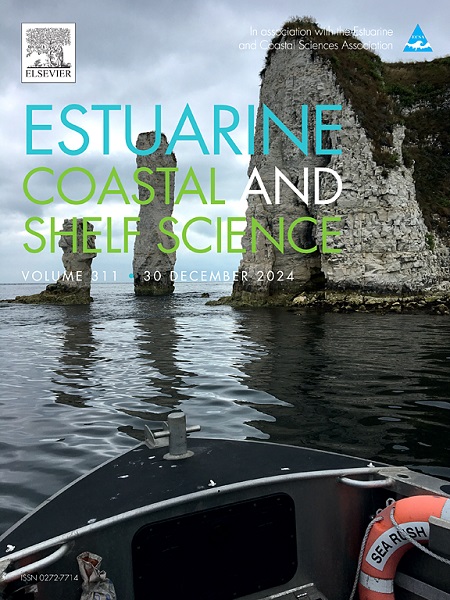马尼拉蛤(Ruditapes philippinarum)的寄生动物群:认识、威胁和控制措施综述
IF 2.6
3区 地球科学
Q1 MARINE & FRESHWATER BIOLOGY
引用次数: 0
摘要
马尼拉蛤(Ruditapes philippinarum)是全球水产养殖的关键物种;然而,由于寄生虫感染,它面临着巨大的挑战。本文综述了影响马尼拉蛤种群的各种动物,包括病毒、细菌、原生动物、后生动物、节肢动物和环节动物。此外,本文还详细介绍了这些寄生虫的致病性、地理分布、诊断方法和调查时期。值得注意的是,尽管一些病原体,如奥氏波斯金弧菌和绦虫弧菌在多个国家广泛分布,但其他病原体的分布则更为局部。鉴定出世界动物卫生组织(WOAH)指定的病原体,如P. olseni,凸显了马尼拉蛤养殖业和生态系统健康所面临威胁的严重性。此外,未被WOAH列入名单的寄生虫,如绦虫弧菌、绦虫奈氏菌、溶藻弧菌和脾弧菌,对马尼拉蛤的健康和水产养殖的可持续性构成重大威胁,需要从整体上了解宿主-寄生虫动态。全球化、海水温度上升和环境因素加剧了病原体引入和传播的风险,强调需要采取积极措施。病原体监测、风险评估和诊断技术的发展对有效的疾病管理至关重要。加强法律框架和基础设施对于加强检疫和流行病预防措施以及确保马尼拉蛤养殖的长期可持续性至关重要。本文章由计算机程序翻译,如有差异,请以英文原文为准。

Parasitic fauna of the Manila clam (Ruditapes philippinarum): Insights, threats, and control measures – A review
The Manila clam (Ruditapes philippinarum) is a pivotal species in global aquaculture; however, it faces substantial challenges due to parasitic infections. This comprehensive review discusses the diverse fauna affecting Manila clam populations, including viruses, bacteria, protozoans, metazoans, arthropods, and annelid taxa. Additionally, this review elaborates on the pathogenicity, geographical distribution, diagnostic methods, and investigation periods associated with these parasites. Notably, although some pathogens, such as Perkinsus olseni and Vibrio tapetis are widespread across multiple countries, others exhibit more localized distributions. The identification of World Organization for Animal Health (WOAH)-designated pathogens, such as P. olseni highlights the severity of the threats posed to Manila clam aquaculture and ecosystem health. Moreover, parasites not listed by WOAH, such as V. tapetis, Nymphonella tapetis, V. alginolyticus, and V. splendidus, pose substantial threats to Manila clam health and aquaculture sustainability, necessitating a holistic approach to understanding host–parasite dynamics. Globalization, rising sea temperatures, and environmental factors exacerbate the risk of pathogen introduction and spread, underscoring the need for proactive measures. Pathogen monitoring, risk assessment, and the development of diagnostic technology are crucial for effective disease management. Strengthening legal frameworks and infrastructure is essential to bolster quarantine and epidemic prevention measures and to ensure the long-term sustainability of Manila clam aquaculture.
求助全文
通过发布文献求助,成功后即可免费获取论文全文。
去求助
来源期刊
CiteScore
5.60
自引率
7.10%
发文量
374
审稿时长
9 months
期刊介绍:
Estuarine, Coastal and Shelf Science is an international multidisciplinary journal devoted to the analysis of saline water phenomena ranging from the outer edge of the continental shelf to the upper limits of the tidal zone. The journal provides a unique forum, unifying the multidisciplinary approaches to the study of the oceanography of estuaries, coastal zones, and continental shelf seas. It features original research papers, review papers and short communications treating such disciplines as zoology, botany, geology, sedimentology, physical oceanography.

 求助内容:
求助内容: 应助结果提醒方式:
应助结果提醒方式:


